Every angler knows that the secret to a great catch lies in how well you tie your knots. Knowing what knot works best for each fishing scenario is also very important. So it is not enough to master just one type of knot.
This article gives you step-by-step guidelines on how to tie fishing knots.
7 Most Common Types of Fishing Knots
Albright Knot
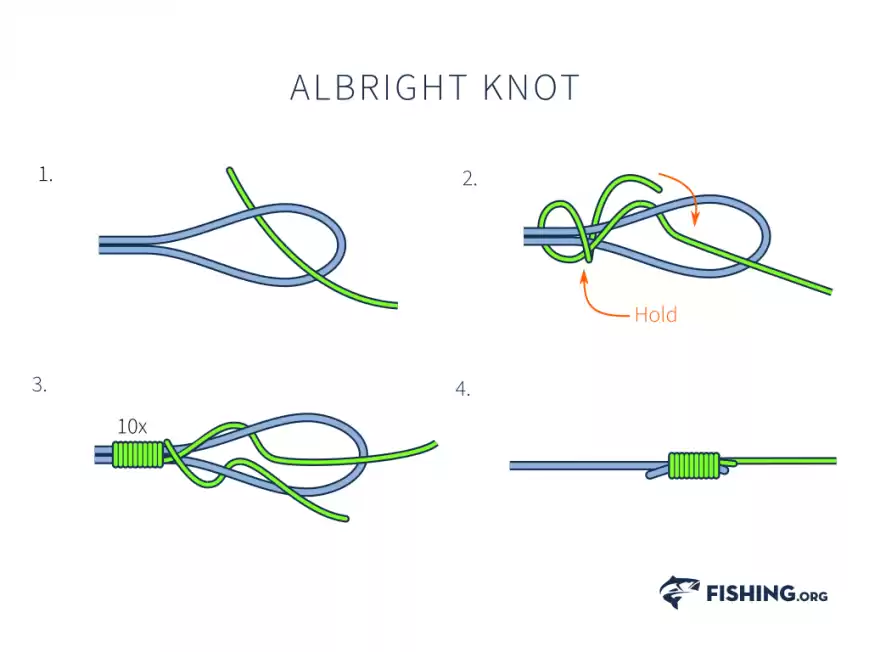
The Albright knot is one of the most versatile knots that you will find. It is helpful for different types of fishing lines, from braided to wire or even monofilament to wire.
You can use the Albright knot to attach monofilaments that have different diameters. Additionally, you can use this knot to join two fishing lines.
How to Tie an Albright Knot
- Form a loop in your gold line. If you have unequal lines, the loop shield goes on the thicker line.
- Pass the blue line through the loop. This should be the thinner line of the two.
- Wrap this blue line around itself and the loop ten times.
- Pass its end through the loop next to itself.
- Lubricate the knot and pull it tightly, then trim the ends to attain a neat knot.
Surgeon’s Join Knot
If you have two moderately unequal fishing lines, then the Surgeon’s Joint knot is the best one to use. It is easy to tie and allows you to choose the size of the tippet that best suits the size of the fly.
However, you should know that it can get rather bulky.
How to Tie the Surgeon’s Joint Knot
- Place your leader and tippet side by side and use both of the lines to create a loop.
- Ensure there is enough overlap on the loop to tie double overhand knots.
- Pull the ends through the loop you have made.
- Pull them again through the loop.
- Lubricate the knot before you pull it tight.
- Trim it for a neat finish.
Surgeon’s Loop Knot
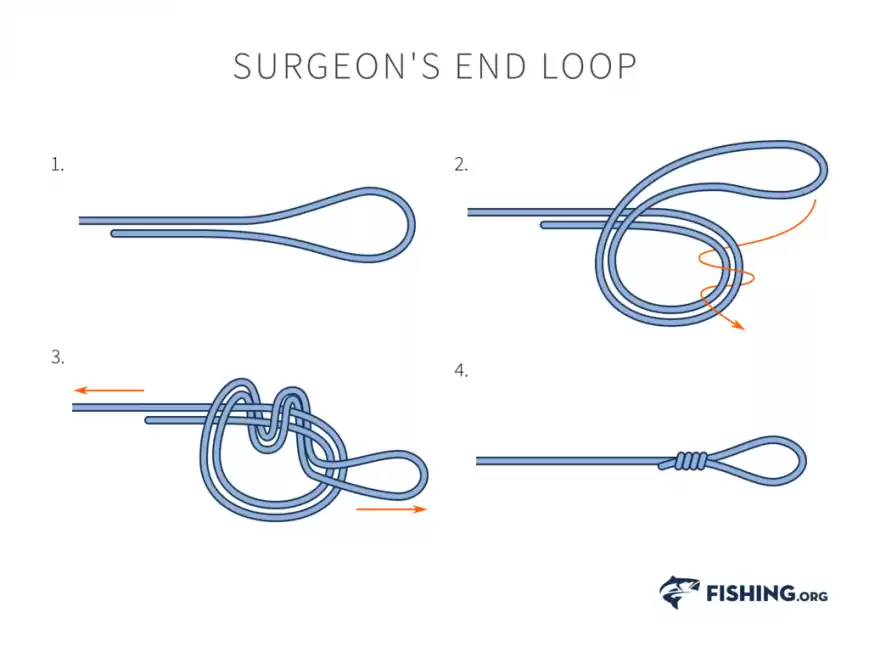
The Surgeon’s Loop knot is often used in fishing and is easy to tie at the end of the line. It is best for loop to loop connections and can create a fixed loop that will allow the fly to move naturally.
Tying it is pretty similar to the Surgeon’s Joint Knot. What’s more, you can add a few alterations to it and make it a Triple Surgeon’s Knot.
How to Tie the Surgeon’s Loop Knot
- At the end of your line, create a bight and tie an overhand knot.
- Pass the bight you have made through a second time.
- Adjust your bight and create a loop of your desired size.
- Lubricate the knot and tightly pull the knot.
- Trim the ends.
Uni Knot
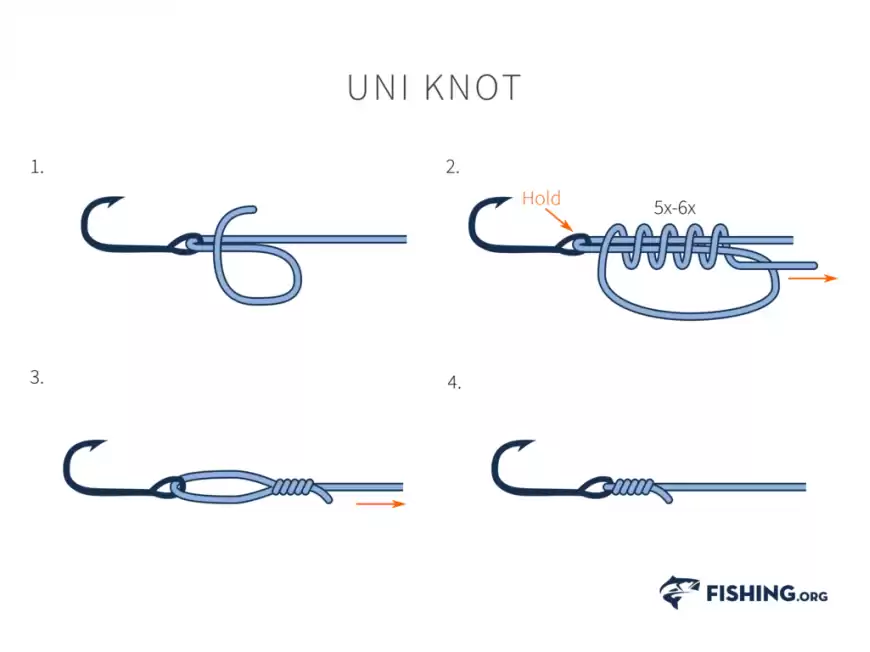
The Uni knot is one of the most amazing knots due to its versatile nature. This type of knot can perform many different functions and resembles the Hangman’s Noose.
However, it differs in its internal structure. What’s more, you can use it to join two lines, to form a Double Grinner.
How to Tie the Uni Knot
- Pass the end through the eye and create a complete loop next to the standing line.
- Wrap the end within the loop around both lines five times, then lubricate the loop.
- Pull to tighten and form a spiral with the loops.
- Slide the knot until you attain the loop size you desire.
- Place the loop on a post and tag the end on the standing line.
- Trim your knot’s end.
Snell Knot
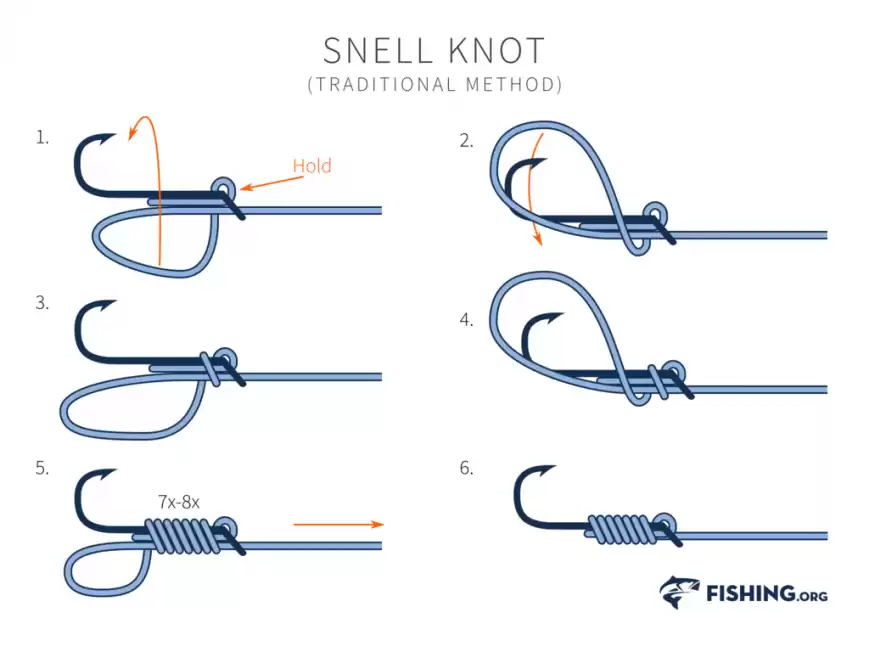
Snell knots are very effective in allowing you to tie the tippet or leader directly to a baited hook. This knot aligns the shank of the hook with the fishing line. It is both reliable and ensures the strength of the fishing line.
How to Tie the Snell Knot
- Pass the leader’s end through the eye.
- Pass it through the eye again, maintaining your previous direction.
- Grip both the eye and the parts you have inserted in it.
- Wrap your loop around the shank of the loop eight times.
- Pull gently on the standing end to shrink the loop.
- Lubricate the loop and pull both ends to tighten.
- Trim your knot’s ends.
Palomar Knot
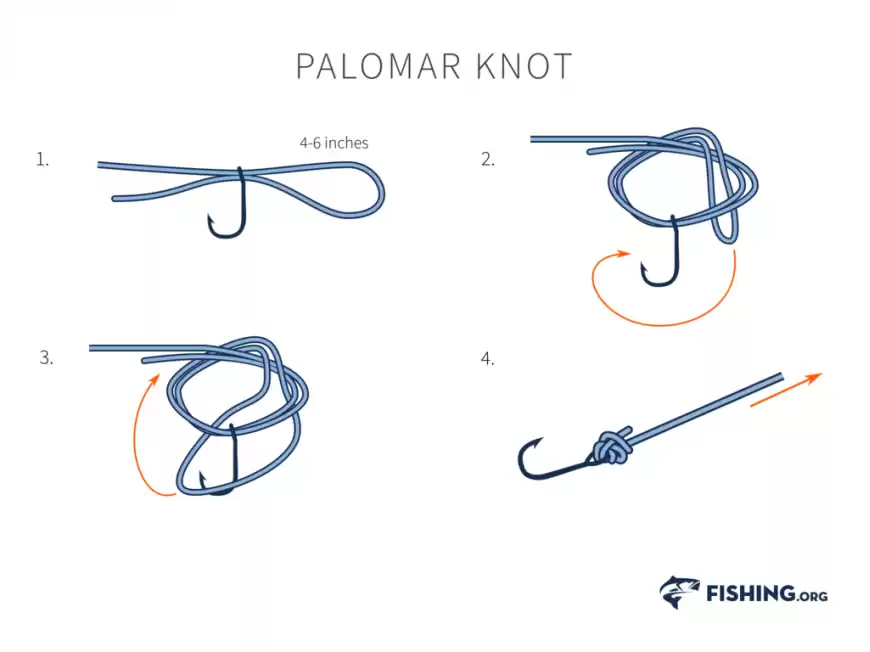
This simple knot is excellent for tying a fly to a trippet or leader or a line to a hook. It is both solid and reliable and is one of the basic knots you should learn as a fisherman. It is best for use with braided lines and is not too intricate.
How to Tie the Palomar Knot
- Create a bight at the end of your line.
- Pass the bight you have created through the eye of the hook, then tie an overhand knot.
- Pass the bight above the hook, then around the knot.
- Lubricate the knot.
- Tighten the knot by pulling the tag ends and the standing.
- Trim your tag ends.
Perfection Loop Knot
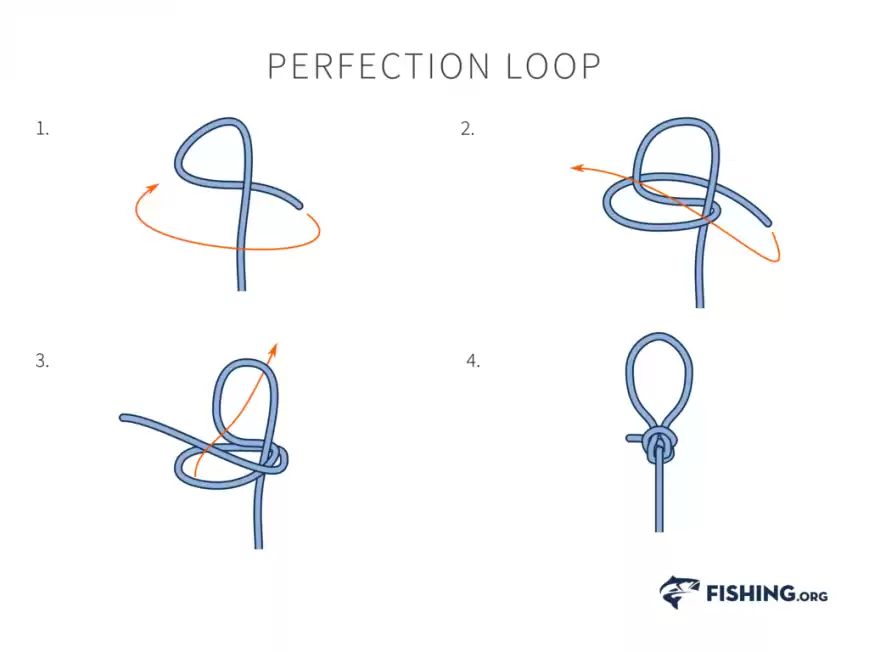
If you are out for a loop that will be simple to make yet perfect for the standing end, the Perfection Loop Knot is what you should go for.
The Perfection Loop Knot creates an excellent, neat, and stable loop for your standing end. It is also great for quick leader changes.
How to Tie the Perfection Loop Knot
- Form a loop at the end of the line.
- Create a second loop, laying it on top of the first one. Ensure its tag end passes under the standing end.
- Pass the tag end between those two loops, pulling the top loop through the bottom loop.
- Lubricate the knot.
- Pull the new loop and the standing end to tighten the loop.
- Trim the end of the loops.
Practice and Learn Tying Fishing Knots
As you have seen, there are plenty of ways to tie your knots and ensure the perfect catch. However, it is not enough to just learn them. You will need to practice from time to time for you to be effective in tying fishing knots.
Exploring the subject, read also our article about choosing the Best Time to Fish.
Did you enjoy this tutorial? Be sure to refer to it any time you get stuck with your knots. Remember to share it with your fishing buddies and comment on additional tips in the comment section below.

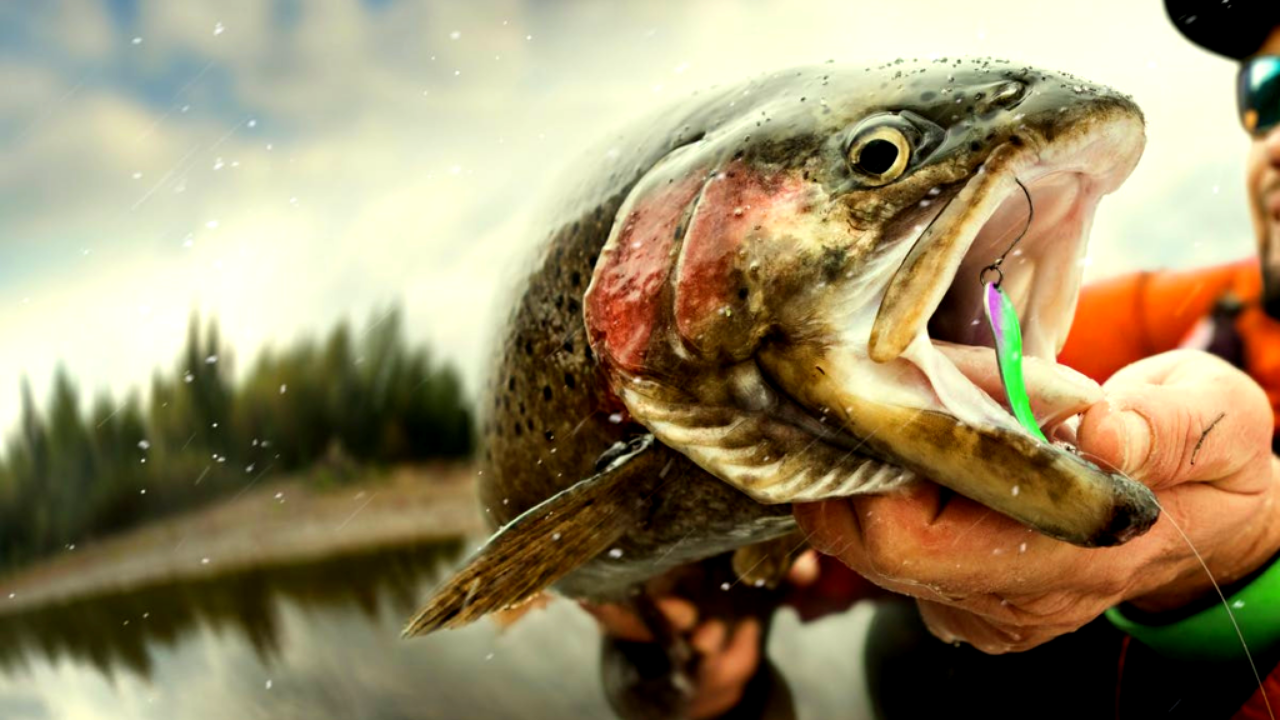
3 comments